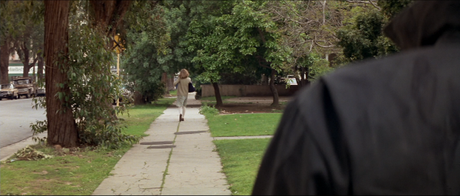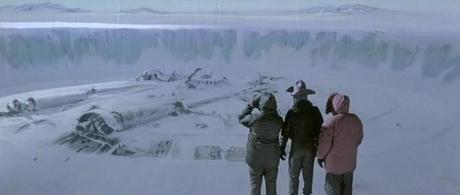Re-Examining John Carpenter’s Legendary Career
Written by: Brandon Engel
An eerie white mask peers through the window, surveying the scene. Unsuspecting babysitter, a young killer on the loose. When that iconic score plays, we know the soulless creature skulking about the house is ready for murder and mayhem. His creator, John Carpenter, has been deemed the “Master of Horror”, but his talent transcends beyond mere screams and thrills. Carpenter has had numerous roles in the film industry, working as a writer, actor, musician and composer, as well as a true auteur of terror.
Growing Up
Carpenter, a little boy with stars in his eyes, was fascinated by John Ford’s Westerns and classic Hollywood film director, Howard Hawks. He also loved to watch 1950’s, low-budget horror films. Before he even graduated from college, John Carpenter was making films of his own. After leaving Western Kentucky University for University of Southern California’s School of Cinematic Arts in 1968, he created several short films that would lead to his most famous feature: Halloween.
His “Dark” Career Begins

His next project was the early action genre thriller Assault on Precinct 13 (1976). Heralded as “a nonstop thrill ride”, the film depicts a lone police officer fighting off a street gang to protect a closing precinct. John Carpenter directed, scored, and edited this low-budget b-film. Though considered a flop in the United States, it was a critical success in Europe.
Cult Classics
But in 1978, Carpenter and his team made horror history. Halloween, created on a $325,000 budget, marked a turning point in horror films. Using techniques he’d honed while working his previous low-budget pictures, Carpenter designed a film to draw viewers to the edge of their seats. Unlike the myriad of copycat slasher films to follow, Halloween terrified its audience with little violence and gore. Ultimately Michael Myers, that soulless monster caught between human and supernatural worlds, slashed his way to grossing $47 million dollars in the U.S. and $70 million worldwide.
Returning to theatres with his next feature film, The Fog (1980), Carpenter continued to play on audiences fears of the unknown. When a deep fog descends on a coastal town, it leaves death and turmoil in its wake. The Fog had a larger budget than his previous films; however, Carpenter was not satisfied with the final project. He re-shot several scenes, making his final budget 1.1 million dollars. While not as successful as Halloween, The Fog still received generally good reviews and was financially viable.
Departing the realm of terror and thrillers with the sci-fi action adventure film Escape from New York (1981), Carpenter had a bigger budget to work his magic. With 6 million dollars he co-wrote, co-scored, and directed Kurt Russell as “Snake Plissken.” In this futuristic adventure romp, Manhattan Island is a prison and the President of the United States falls victim to life-sentence prisoners. Snake and his friends must rescue the President from death, within the walls of ruthless prison system. The movie grossed over $25 million and proved that Carpenter could do more than just clever horror.
Apocalypse Trilogy

The Thing (1982) began what Carpenter called his “Apocalypse Trilogy.” The films were dark, and menacing with the threat of humanity’s destruction bubbling just below the surface. The Thing focuses on researchers, alone and desperate, in a research facility at the remotest place on Earth: the Antarctic. An alien inhabits the bodies of the researches until there is no one they can trust. Even though the film had spectacular special effects and high production values, it was a commercial disappointment; most likely due to being released after Spielberg’s feel good movie about the friendship between a lost alien and a boy, E.T.
The next film in his trilogy was Prince of Darkness (1987), about evil possessing young college students. The last of the trilogy, In the Mouth of Madness (1995),features an insurance investigator who is sent to uncover the whereabouts of a missing horror writer only to find himself trapped in a town of the author’s creation. Unfortunately, none of these films did well at the box office, though they are regarded as cult classics today.
Starman
In 1984, Carpenter returned to sci-fi with the movie Starman. In the film Jeff Bridges plays an alien shot down by the U.S. Military that assumes the body of Jenny Hayden’s deceased husband through a lock of hair. In his romantic misadventure, Starman shows the alien’s trek as he makes his way across America. At first, Hayden is frightened of him, but she eventually falls in love while they’re both being chased by military guards. Starman was not only critically acclaimed; it was nominated for both an Oscar and a Golden Globe.
The Return to Horror
Though he’d experienced success with earlier films, Carpenter found the 90’s to be a difficult period creatively. He had box office failures with films like Memoirs of an Invisible Man (1992) and Vampires (1998).
He returned to work on television series The Masters of Horror in which he directed an episode called “Cigarette Burns.” In 2010, he made his last trip to the box office with The Ward, a psychological horror film about a woman caught in a mental institution haunted by a previous dead patient. Robert Rodriguez’s new El Rey Network (see this website for local channel details) has kept the Carpenter legacy alive by screening interviews featuring him and other famous directors, Quentin Tarantino among them.
John Carpenter fans can recognize his films by their minimalist lighting, static camera, and his themes of what we fear the most: the unknown. Truly a “renaissance man” of the cinema, he also scored over seventeen of his twenty films. John Carpenter translated the formulaic terror of low-budget films into box office success, while setting the bar so high that few directors have managed to equal it.

